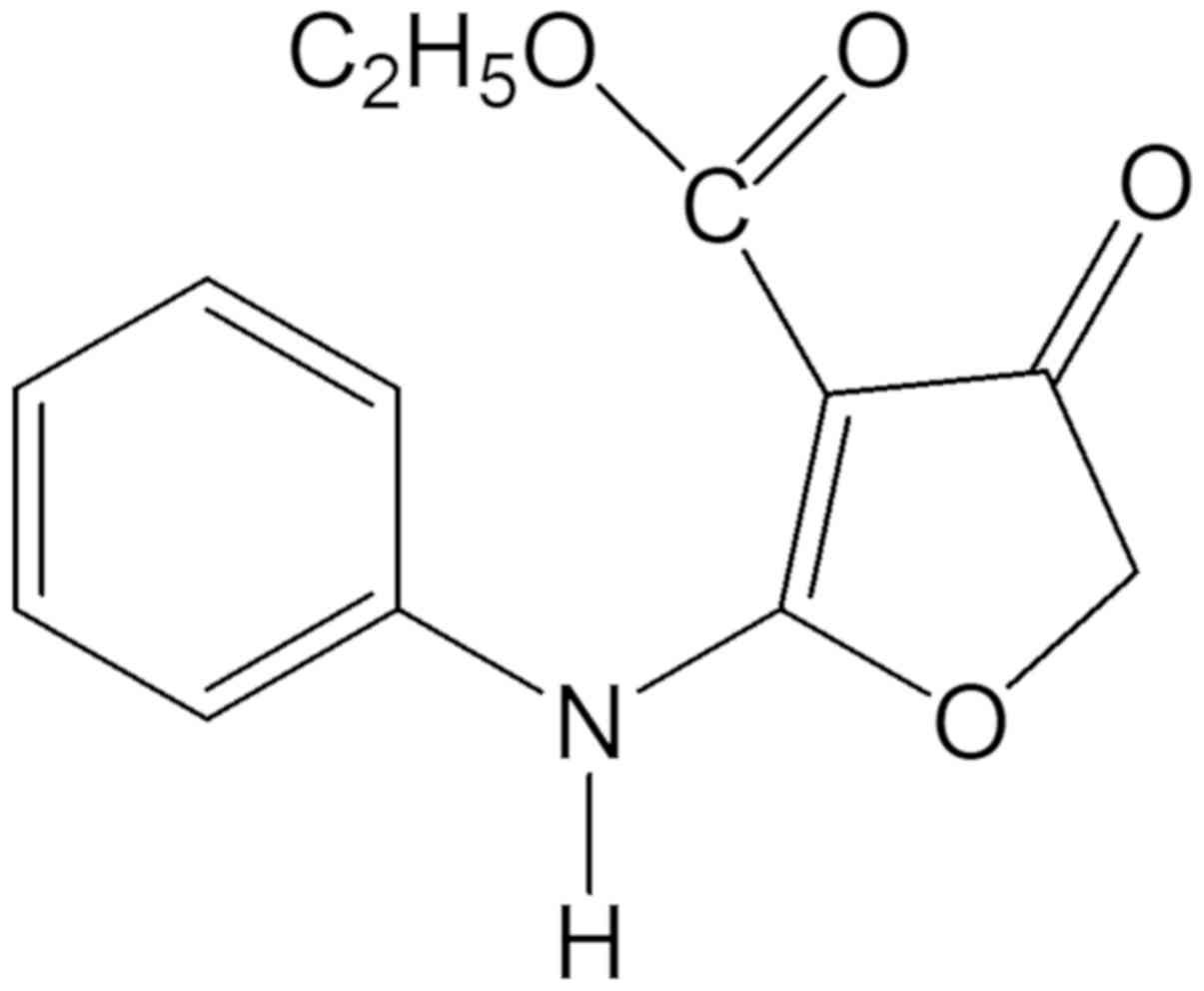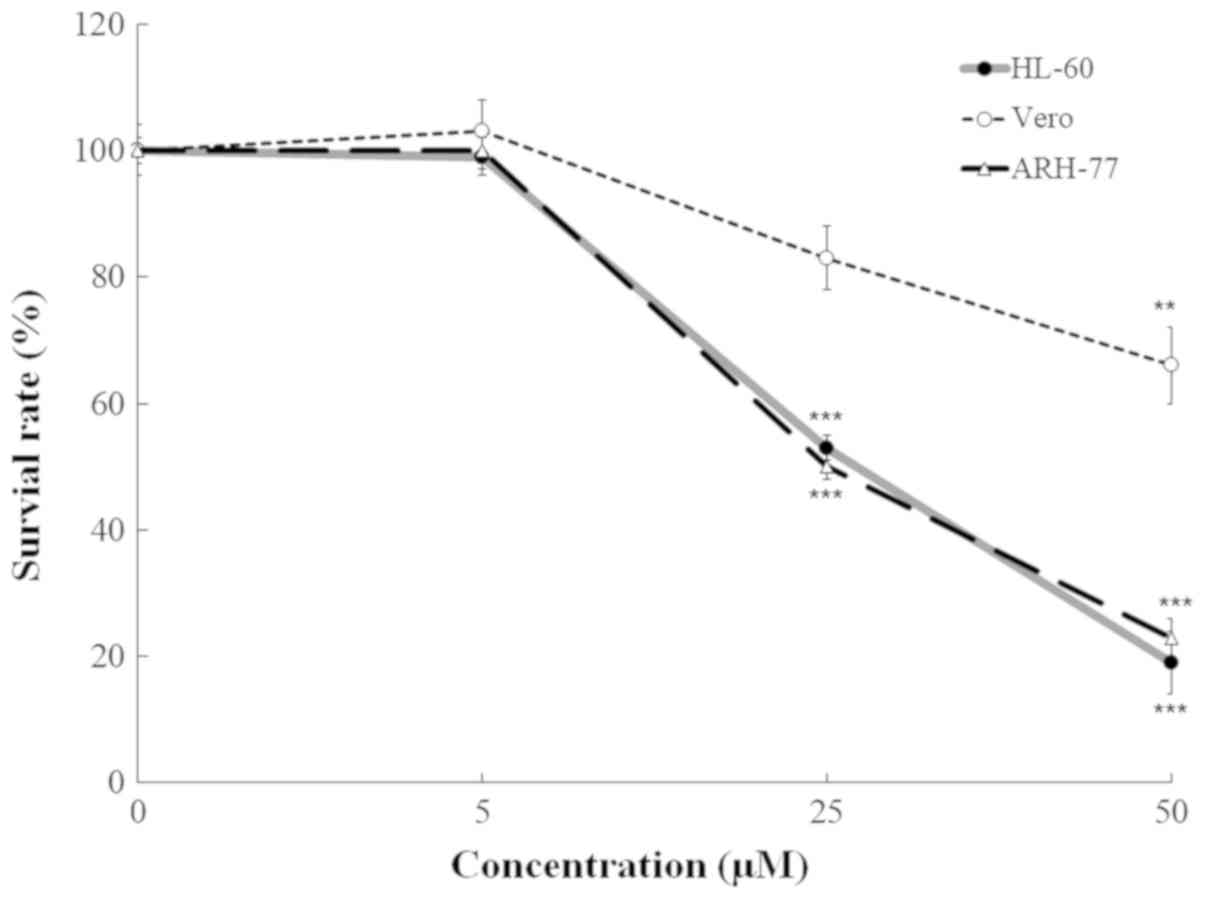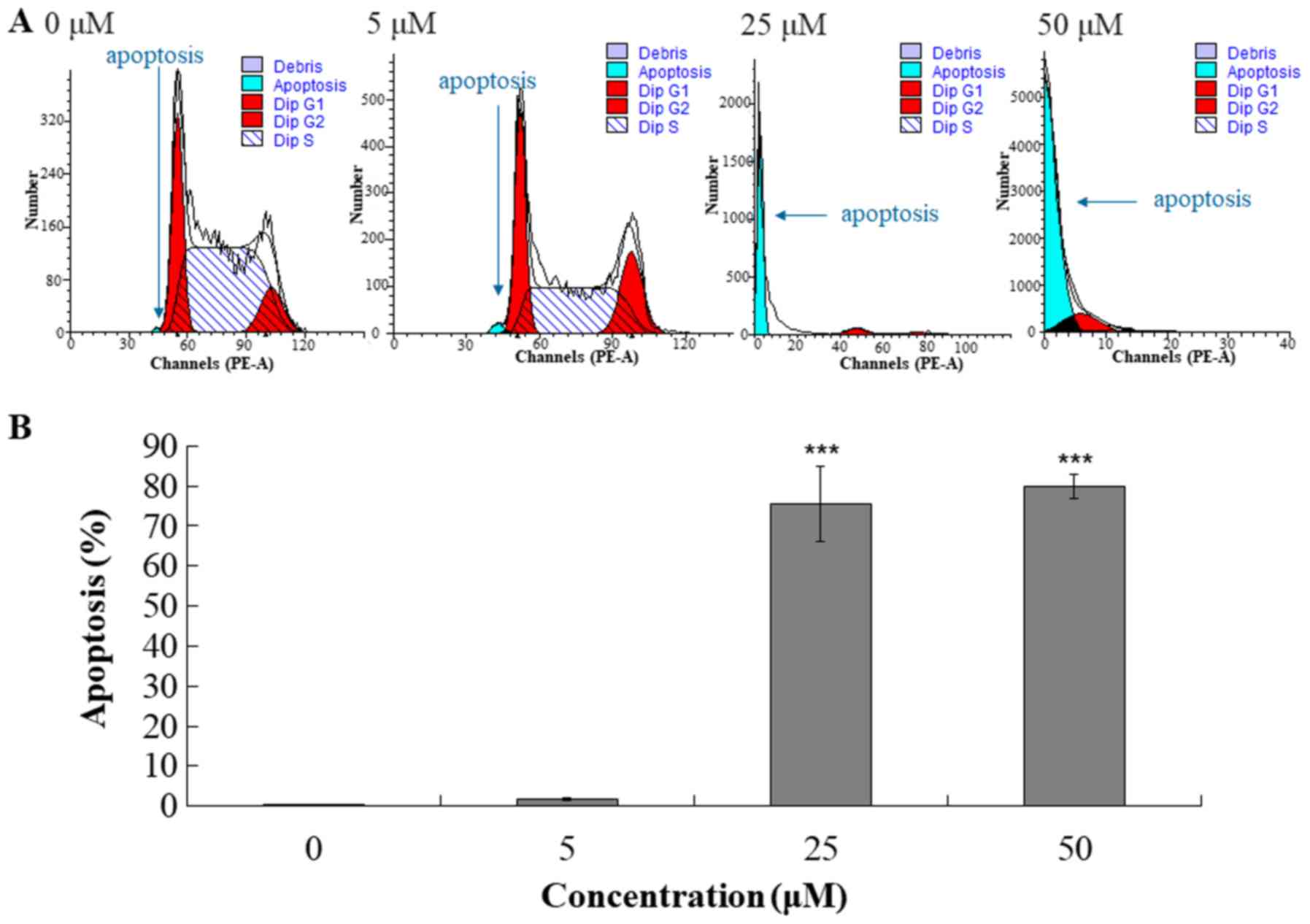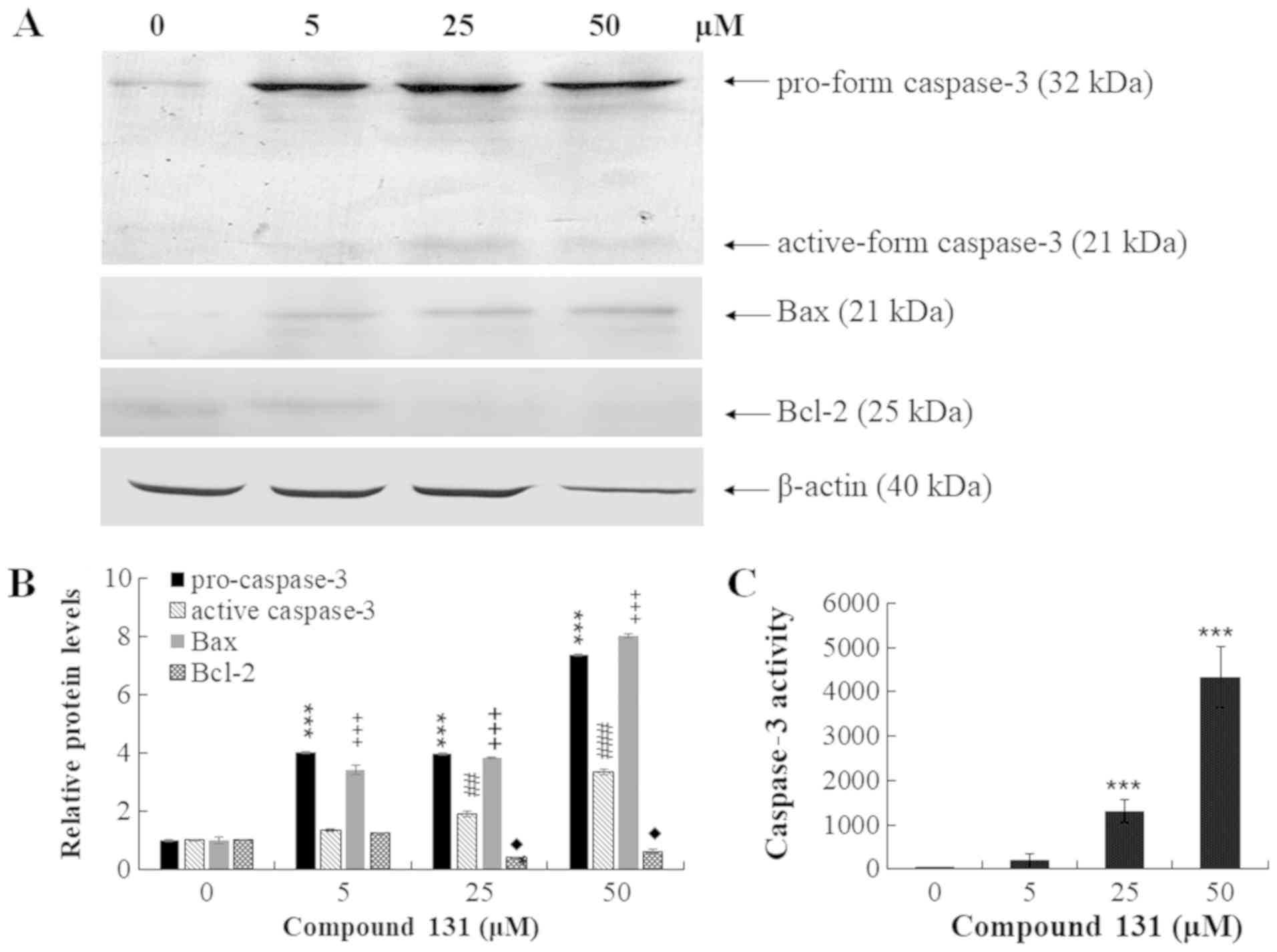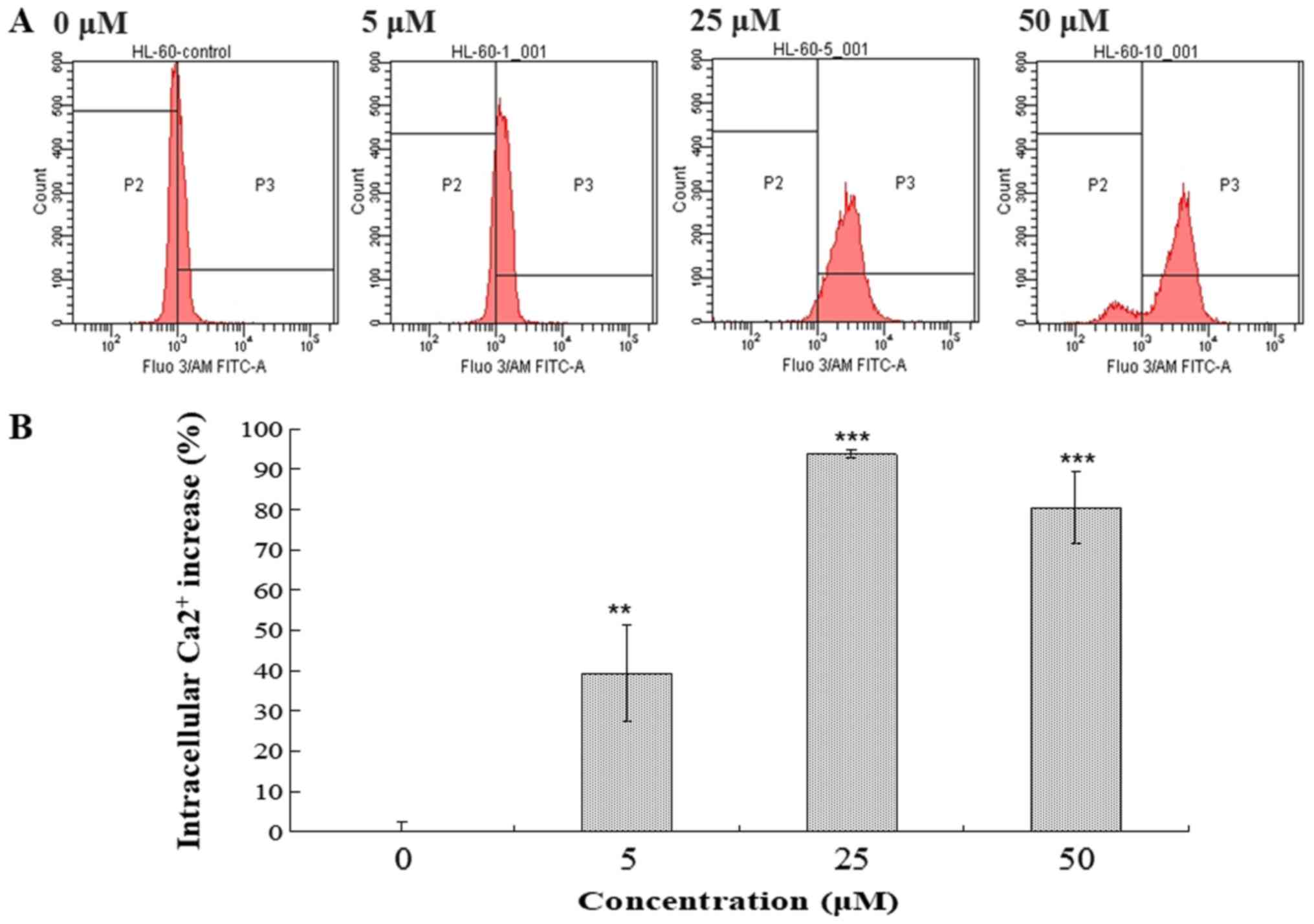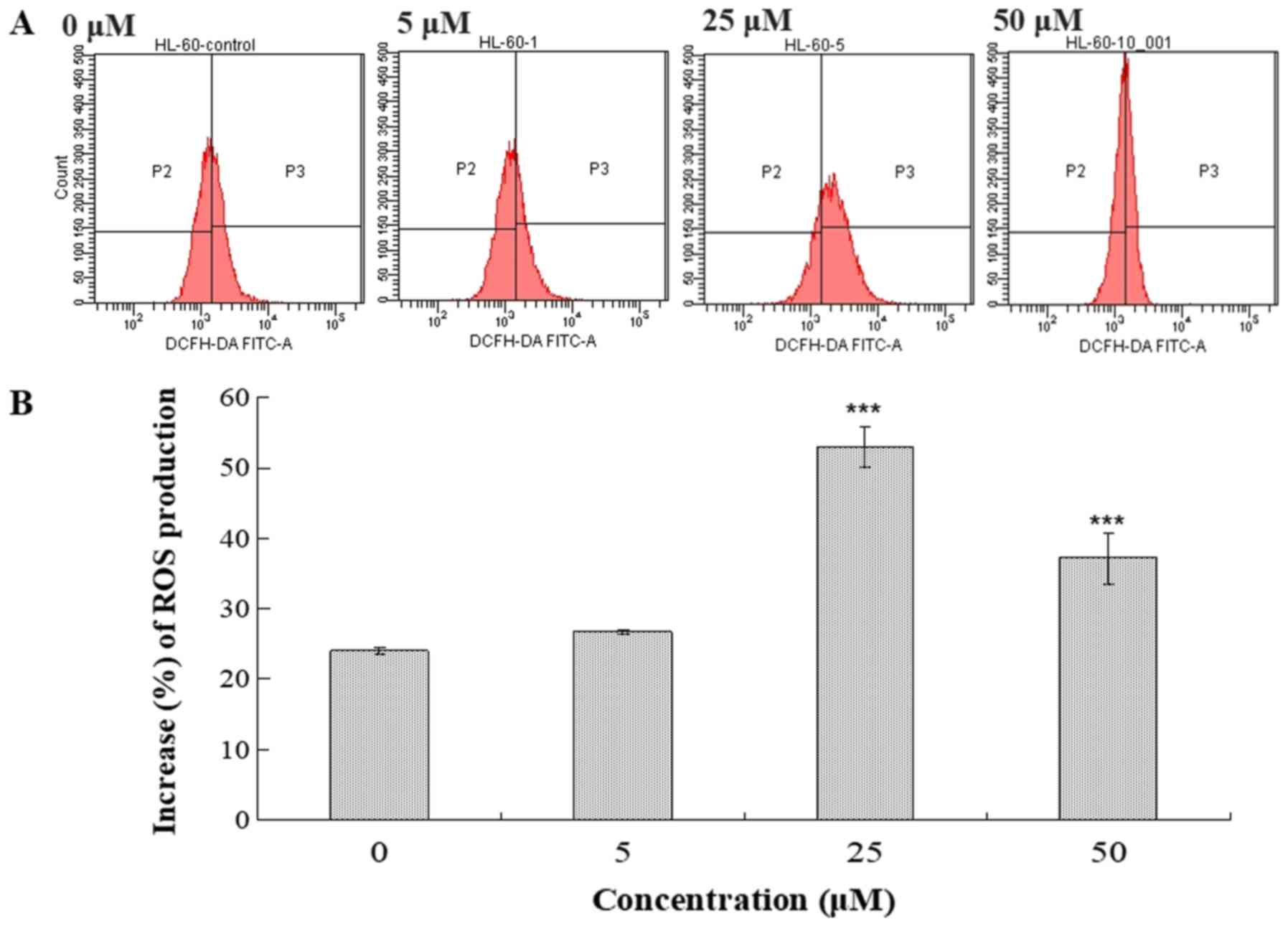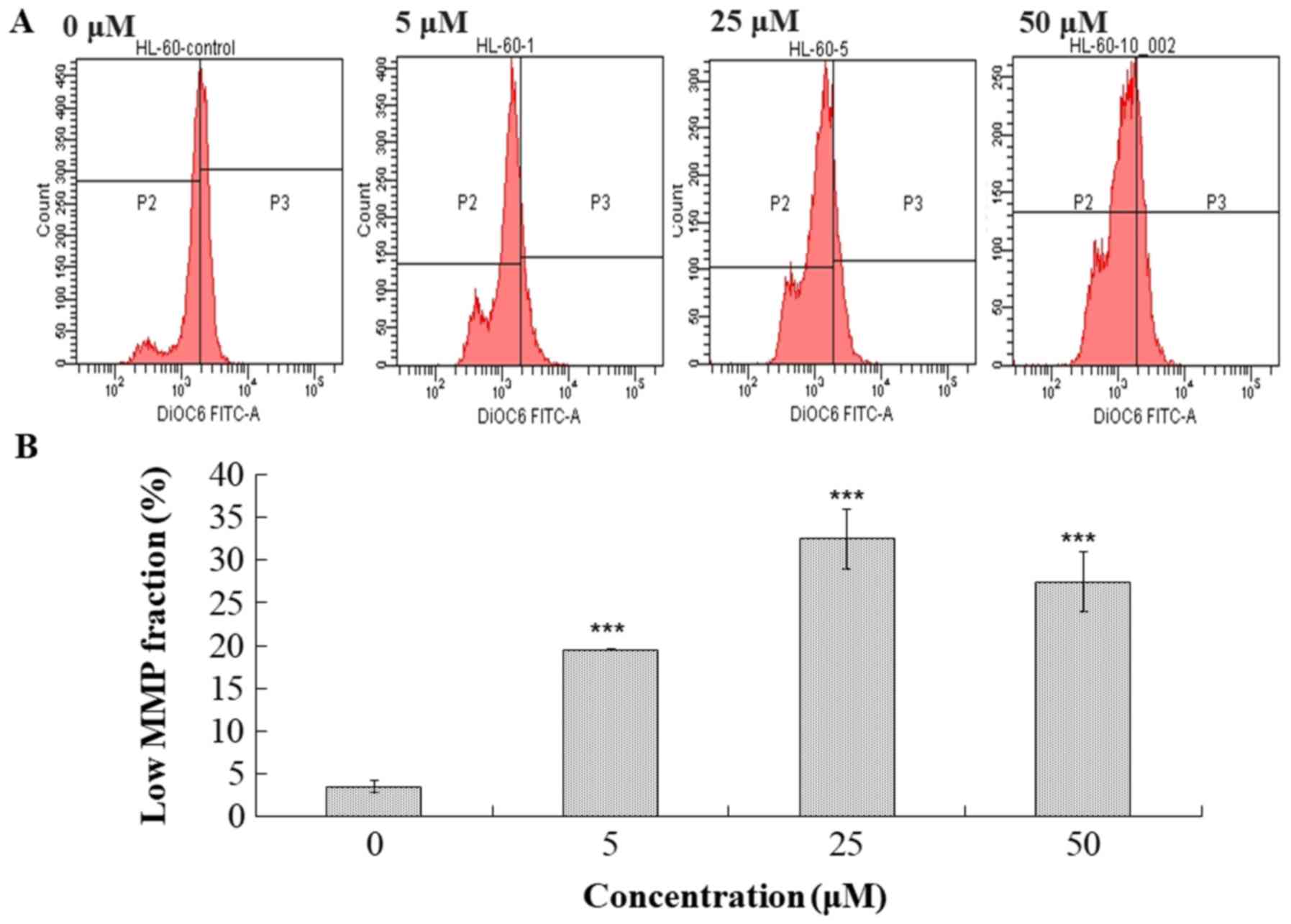|
1
|
Hao T, Li-Talley M, Buck A and Chen W: An
emerging trend of rapid increase of leukemia but not all cancers in
the aging population in the United States. Sci Rep. 9:120702019.
View Article : Google Scholar : PubMed/NCBI
|
|
2
|
Tarus PK, Coombes PH, Crouch NR,
Mulholland DA and Moodley B: Furoquinoline alkaloids from the
southern African Rutaceae Teclea natalensis. Phytochemistry.
66:703–706. 2005. View Article : Google Scholar : PubMed/NCBI
|
|
3
|
Zhao W, Wolfender JL, Hostettmann K, Xu R
and Qin G: Antifungal alkaloids and limonoid derivatives from
Dictamnus dasycarpus. Phytochemistry. 47:7–11. 1998.
View Article : Google Scholar : PubMed/NCBI
|
|
4
|
Chen KS, Chang YL, Teng CM, Chen CF and Wu
YC: Furoquinolines with antiplatelet aggregation activity from
leaves of Melicope confusa. Planta Med. 66:80–81. 2000.
View Article : Google Scholar : PubMed/NCBI
|
|
5
|
Su MJ, Chang GJ, Wu MH and Kuo SC:
Electrophysiological basis for the antiarrhythmic action and
positive inotropy of HA-7, a furoquinoline alkaloid derivative, in
rat heart. Br J Pharmacol. 122:1285–1298. 1997. View Article : Google Scholar : PubMed/NCBI
|
|
6
|
Lahey FN and McCamish M: Acrophylline and
acrophyllidine. Two new alkaloids from Acronychia
haplophylla. Tetrahedron Lett. 12:1525–1527. 1968. View Article : Google Scholar : PubMed/NCBI
|
|
7
|
Zhao YL, Chen YL, Sheu JY, Chen IL, Wang
TC and Tzeng CC: Synthesis and antimycobacterial evaluation of
certain fluoroquinolone derivatives. Bioorg Med Chem. 13:3921–3926.
2005. View Article : Google Scholar : PubMed/NCBI
|
|
8
|
Sheu JY, Chen YL, Tzeng CC, Hsu SL, Fang
KC and Wang TC: Synthesis, and antimycobacterial and cytotoxic
evaluation of certain fluoroquinolone derivatives. Helv Chim Acta.
86:2481–2489. 2003. View Article : Google Scholar
|
|
9
|
Huang AC, Lin TP, Kuo SC and Wang JP: The
antiallergic activities of synthetic acrophylline and
acrophyllidine. J Nat Prod. 58:117–120. 1995. View Article : Google Scholar : PubMed/NCBI
|
|
10
|
Wang JP, Tsao LT, Raung SL, Hsu MF and Kuo
SC: Inhibition by HAJ11 of respiratory burst in neutrophils and the
involvement of protein tyrosine phosphorylation and phospholipase D
activation. Br J Pharmacol. 120:79–87. 1997. View Article : Google Scholar : PubMed/NCBI
|
|
11
|
Huang AC, Chung JG, Kuo SC, Lu HF and Lin
TP: Synthesis and cytotoxic activity of certain
2,3,4,9-tetrahydrofuro [2,3-b] quinolin-3,4-dione and ethyl
2-(substituted aniline) −4-oxo-4,5-dihydrofuran-3-carboxylate
derivatives in murine leukemia WEHI-3 cells. In Vivo. 21:227–236.
2007.PubMed/NCBI
|
|
12
|
Lin TP, Huang AC, Wei HC, Lin JG and Chung
JG: Ethyl 2- [N-p-chlorobenzyl- (2′-methyl)]
anilino-4-oxo-4,5-dihydrofuran-3-carboxylate (JOT01007) induces
apoptosis in human cervical cancer Ca Ski cells. In Vivo.
21:397–406. 2007.PubMed/NCBI
|
|
13
|
Huang AC, Lin TP, Weng YS, Ho YT, Lin HJ,
Huang LJ, Kuo SC and Chung JG: Ethyl
2-[N-m-chlorobenzyl-(2′-methyl)]
anilino-4-oxo-4,5-dihydrofuran-3-carboxylate (JOT01006) induces
apoptosis in human cervical cancer HeLa cells. Anticancer Res.
27:2505–2514. 2007.PubMed/NCBI
|
|
14
|
Yang TC, Shiu SL, Chuang PH, Lin YJ, Wan
L, Lan YC and Lin CW: Japanese encephalitis virus NS2B-NS3 protease
induces caspase 3 activation and mitochondria-mediated apoptosis in
human medulloblastoma cells. Virus Res. 143:77–85. 2009. View Article : Google Scholar : PubMed/NCBI
|
|
15
|
Yang TC, Lai CC, Shiu SL, Chuang PH, Tzou
BC, Lin YY, Tsai FJ and Lin CW: Japanese encephalitis virus
down-regulates thioredoxin and induces ROS-mediated ASK1-ERK/p38
MAPK activation in human promonocyte cells. Microbes Infect.
12:643–651. 2010. View Article : Google Scholar : PubMed/NCBI
|
|
16
|
Viarengo A, Cenesi L, Moore MN and Orunesu
M: Effects of Hg2+ and Cu2+ on the cytosolic
Ca2+ level in molluscan blood cells evaluated by
confocal microscopy and spectrofluorimetry. Marine Biol.
119:557–564. 1994. View Article : Google Scholar
|
|
17
|
Lin SS, Huang HP, Yang JS, Wu JY, Hsai TC,
Lin CC, Lin CW, Kuo CL, Gibson Wood W and Chung JG: DNA damage and
endoplasmic reticulum stress mediated curcumin-induced cell cycle
arrest and apoptosis in human lung carcinoma A-549 cells through
the activation caspases cascade- and mitochondrial-dependent
pathway. Cancer Lett. 272:77–90. 2008. View Article : Google Scholar : PubMed/NCBI
|
|
18
|
Mattson MP and Chan SL: Neuronal and glial
calcium signaling in Alzheimer's disease. Cell Calcium. 34:385–397.
2003. View Article : Google Scholar : PubMed/NCBI
|
|
19
|
Benali-Furet NL, Chami M, Houel L, De
Giorgi F, Vernejoul F, Lagorce D, Buscail L, Bartenschlager R,
Ichas F, Rizzuto R and Paterlini-Bréchot P: Hepatitis C virus core
triggers apoptosis in liver cells by inducing ER stress and ER
calcium depletion. Oncogene. 24:4921–4933. 2005. View Article : Google Scholar : PubMed/NCBI
|
|
20
|
Haynes CM, Titus EA and Cooper AA:
Degradation of misfolded proteins prevents ER-derived oxidative
stress and cell death. Mol Cell. 15:767–776. 2004. View Article : Google Scholar : PubMed/NCBI
|
|
21
|
Xue X, Piao JH, Nakajima A, Sakon-Komazawa
S, Kojima Y, Mori K, Yagita H, Okumura K, Harding H and Nakano H:
Tumor necrosis factor alpha (TNFalpha) induces the unfolded protein
response (UPR) in a reactive oxygen species (ROS)-dependent
fashion, and the UPR counteracts ROS accumulation by TNFalpha. J
Biol Chem. 280:33917–33925. 2005. View Article : Google Scholar : PubMed/NCBI
|
|
22
|
Kadenbach B: Intrinsic and extrinsic
uncoupling of oxidative phosphorylation. Biochim Biophys Acta.
1604:77–94. 2003. View Article : Google Scholar : PubMed/NCBI
|
|
23
|
Rego AC and Oliveira CR: Mitochondrial
dysfunction and reactive oxygen species in excitotoxicity and
apoptosis: Implications for the pathogenesis of neurodegenerative
diseases. Neurochem Res. 28:1563–1574. 2003. View Article : Google Scholar : PubMed/NCBI
|
|
24
|
Cheng JT, Chang TK and Chen IS:
Skimmianine and related furoquinolines function as antagonists of
5-hydroxytryptamine receptors in animals. J Auton Pharmacol.
14:365–374. 1994. View Article : Google Scholar : PubMed/NCBI
|
|
25
|
Yu SM, Ko FN, Su MJ, Wu TS, Wang ML, Huang
TF and Teng CM: Vasorelaxing effect in rat thoracic aorta caused by
fraxinellone and dictamine isolated from the Chinese herb
Dictamus dasycarpus Turcz: Comparison with cromakalim and
Ca2+ channel blockers. Naunyn Schmiedebergs Arch
Pharmacol. 345:349–355. 1992. View Article : Google Scholar : PubMed/NCBI
|
|
26
|
Cao S, Al-Rehaily AJ, Brodie P, Wisse JH,
Moniz E, Malone S and Kingston DG: Furquinoline alkaloids of
Ertela (Monnieria) trifolia (L.) Kuntze from the Suriname
rainforest. Phytochemistry. 69:553–557. 2008. View Article : Google Scholar : PubMed/NCBI
|















